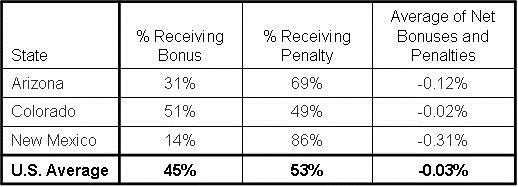CMS Proposes Increased Reimbursement for Hospitals but a Decrease for Physicians in 2025
 Friday, July 12, 2024 at 8:00AM
Friday, July 12, 2024 at 8:00AM The Centers for Medicare & Medicaid Services (CMS) released its proposed changes to the fee schedule for 2025 on July 10. Hospital compensation will increase by 2.6% from 2024 for hospital outpatient services and 2.8% for inpatient services (1). In contrast, physician payment will DECREASE 2.8% (2). This continues the trend in CMS reimbursement. Over the past 20 years, physician pay has plummeted by 26% when adjusted for inflation while hospital reimbursement has surged by 70% (3).
The proposal drew quick criticism from the American Medical Association (AMA) and the Medical Group Management Association (MGMA) (3). "With CMS estimating a fifth consecutive year of Medicare payment reductions — this time by 2.8 percent — it's evident that Congress must solve this problem," AMA President Bruce Scott, MD, said. "In addition to the cut, CMS predicts that the Medicare Economic Index — the measure of practice cost inflation — will increase by 3.6 percent. Facing this widening gap between what Medicare pays physicians and the cost of delivering quality care to patients, physicians are urging Congress to pass a reform package that would permanently strengthen Medicare." MGMA's Senior Vice President of Government Affairs, Anders Gilberg, said the 2.8% reduction to the conversion factor would be alarming in the best circumstances, but to propose doing so at a time when 92% of medical groups report increased operating costs and are otherwise struggling to remain financially viable is critically short-sighted. Gilberg added "Medicare physician reimbursement is on a dire trajectory and these ongoing cuts continue to undermine the ability of medical practices to keep their doors open and function effectively — the need for comprehensive reform is paramount".
Over the time period of decreasing physician reimbursement, there has been a dramatic change in physician employment. Now 77% of physicians are employed, a dramatic increase from 26% only 10 years ago (5). The reason most often cited has been declining reimbursement. Although cost containment is often cited as a reason for the decline in physician payments. It should be apparent that CMS’ “cost containments” have done little to stem the rising costs of healthcare (6). Some have associated increasing physician employment for decreasing access and quality of care (4,7).
A recent comment from George Parides asserts “what is happening now is what the government, Centers for Medicare and Medicaid Services (CMS) and all hospital systems want to happen. They want full, and I mean FULL control of all physicians …” (8). Nothing has really changed with the proposed changes in fee schedules. The trend of healthcare away from a charitable, not-for-profit 501c to a not-for-profit in name only business focused on revenue and profits continues (7).
Richard A. Robbins MD
Editor, SWJPCC
References
- CMS. CY 2025 Medicare Hospital Outpatient Prospective Payment System and Ambulatory Surgical Center Payment System Proposed Rule (CMS 1809-P). July 10,2024. Available at: https://www.cms.gov/newsroom/fact-sheets/cy-2025-medicare-hospital-outpatient-prospective-payment-system-and-ambulatory-surgical-center (accessed 7/11/2024).
- CMS. Calendar Year (CY) 2025 Medicare Physician Fee Schedule Proposed Rule. July 10, 2024. https://www.cms.gov/newsroom/fact-sheets/calendar-year-cy-2025-medicare-physician-fee-schedule-proposed-rule (accessed 7/11/2024).
- Cass A. CMS pitches 2.8% physician payment cut for 2025. Medscape. July 10, 2024. Available at: https://www.beckershospitalreview.com/finance/cms-pitches-2-8-physician-payment-cut-for-2025.html?origin=BHRE&utm_source=BHRE&utm_medium=email&utm_content=newsletter&oly_enc_id=6133H6750001J5K (accessed 7/11/24).
- G Grossi. Dr David Eagle: CMS Reimbursement Cuts Encourage Trend of Independent Physician Exodus. American Journal of Managed Care. Feb 12, 2024. Available at: https://www.ajmc.com/view/dr-david-eagle-cms-reimbursement-cuts-encourage-trend-of-independent-physician-exodus (accessed 7/11/24).
- Physicians Advocacy Institute. Updated Report: Hospital and Corporate Acquisition of Physician Practices and Physician Employment 2019-2023. April 2024. Available at: https://www.physiciansadvocacyinstitute.org/Portals/0/assets/docs/PAI-Research/PAI-Avalere%20Physician%20Employment%20Trends%20Study%202019-2023%20Final.pdf?ver=uGHF46u1GSeZgYXMKFyYvw%3d%3d (accessed 7/11/24).
- McGough M, Winger A, Rakshit S, Amin K. How has U.S. spending on healthcare changed over time? Peterson-KFF Health System Tracker. December 15, 2023. Available at: https://www.healthsystemtracker.org/chart-collection/u-s-spending-healthcare-changed-time/#Total%20national%20health%20expenditures,%20US%20$%20Billions,%201970-2022 (accessed 7/11/24).
- Robbins RA. A Call for Change in Healthcare Governance. Southwest J Pulm Crit Care Sleep. 2024;28(6):91-93. [CrossRef]
- Parides GC. Only a Snowball’s Chance in Hell: Comment on A Call for Change in Healthcare Governance. Southwest J Pulm Crit Care Sleep. 2024;28(6):94. [CrossRef]

